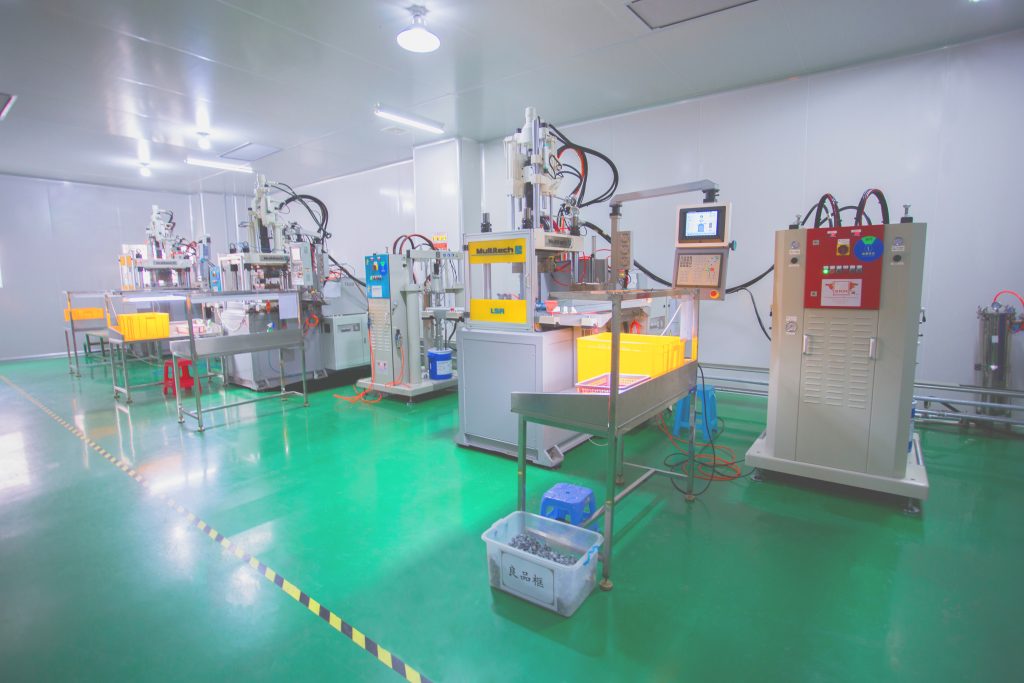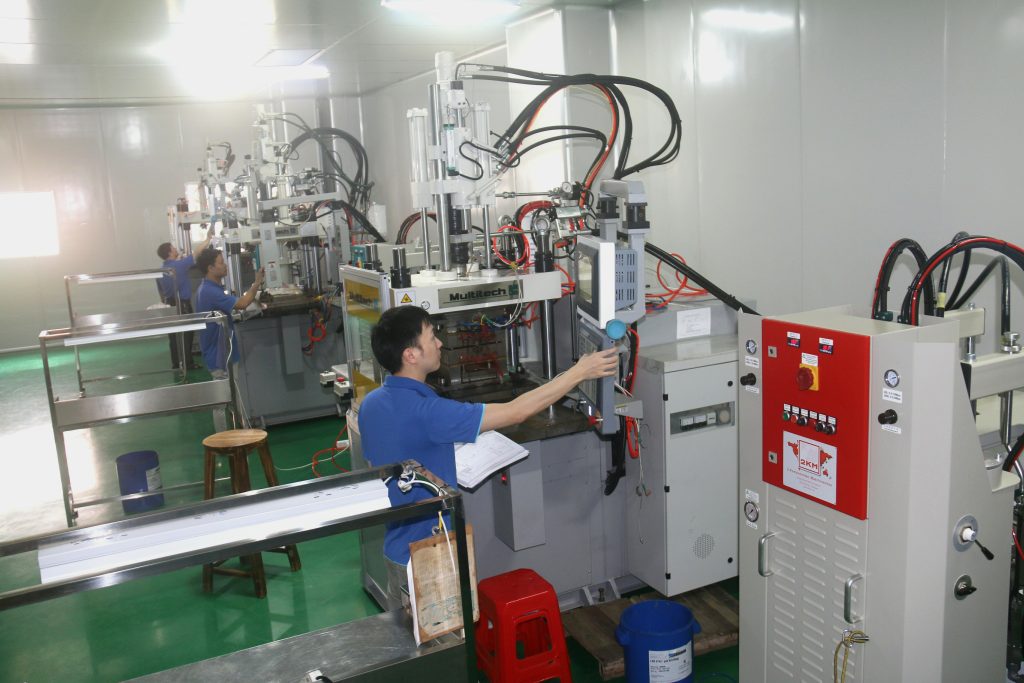Silicone rubber keyboards are essential components in various applications, and several methods exist for their production. The primary techniques include compression molding, liquid silicone injection molding (LSR), insert molding, and transfer molding. Selecting the most appropriate method largely depends on the specific design and performance requirements of the silicone keyboard. This article delves into two predominant methods: compression molding and liquid silicone injection molding, highlighting their respective advantages and disadvantages while showcasing the strengths of Rockeypad in these manufacturing processes.
Compression Molding for Silicone Keyboards
Process Overview:
Compression molding is one of the most widely used methods for producing silicone rubber keyboards. In this process, preheated silicone material is placed into an open mold cavity. The mold is then closed, and pressure is applied, which causes the silicone to melt and fill the cavity. This method produces the desired shape of the keyboard once the material cools and solidifies.
Molding Structures:
Compression molds can be designed as either two-layer or three-layer plate systems. The two-layer structure is more common, consisting of upper and lower plates that shape the silicone into the final product.
![]()
Advantages:
– Cost-Effective Tooling: The initial investment for molds in compression molding is generally lower than that for injection molding, making it a budget-friendly option for production.
– Maximized Chamber Count: This method allows for multiple cavities in a single mold, enabling the simultaneous production of several units.
– Fast Prototyping and Mass Production: Compression molding is efficient for both prototyping and large-scale production runs.
– Economical for Medium Precision: It suits applications where high precision is not the primary requirement.
![]()
Disadvantages:
– Inconsistent Shrinkage: The silicone material may experience unstable contraction during the demolding process, which can affect dimensional accuracy.
– Limited Precision: While suitable for many applications, this method may not achieve the same level of precision as injection molding.
Liquid Silicone Injection Molding (LSR)
Process Overview:
Liquid silicone injection molding is a more advanced technique that involves mixing two components of liquid silicone (A part and B part) in a specific ratio (typically 1:1). These components are combined in a static mixer before being injected into the mold under high pressure and temperature. This process ensures thorough mixing and efficient curing of the silicone, producing highly accurate and consistent parts.
Molding Structure:
The structure of LSR molds is typically more complex than that of compression molds, often incorporating intricate runner and gate systems to facilitate the injection process.

Advantages:
– High Purity and Cleanliness: The use of liquid silicone reduces the risk of contamination, resulting in cleaner final products.
– Superior Precision: LSR achieves tighter tolerances, with parting lines that can be maintained within +/-0.05mm.
– High Efficiency: The cycle time is shorter compared to compression molding, allowing for quicker turnaround times in production.
– Reduced Labor and Energy Consumption: Automation in LSR processes results in lower labor costs and energy use.
– Durability: LSR products generally exhibit longer life spans and improved performance characteristics.
Disadvantages:
– Higher Initial Costs: The upfront investment for molds and equipment can be significant, particularly for complex designs.
– Complex Setup: The process requires precise control of material mixing and temperature, necessitating specialized machinery and expertise.

Rockeypad’s Advantages in Both Methods
At Rockeypad, we pride ourselves on our expertise in both compression molding and liquid silicone injection molding, enabling us to cater to diverse customer needs effectively.
In Compression Molding:
– Experience in Cost Management: Our knowledgeable team ensures that we optimize tooling designs to minimize costs while maintaining quality, making us a go-to partner for economically viable solutions.
– Quality Assurance: We meticulously control the formulation and mold design to mitigate shrinkage issues, resulting in more stable dimensions.
In Liquid Silicone Injection Molding:
– Cutting-Edge Technology: Rockeypad utilizes advanced machinery and processes to achieve the highest levels of precision and efficiency in production.
– Customization Capabilities: Our flexibility in production allows us to adapt quickly to customer specifications, ensuring that we meet or exceed expectations.
In conclusion, both compression molding and liquid silicone injection molding have unique advantages and challenges. The choice between these methods depends on specific project requirements, including cost, precision, and production volume. Rockeypad stands out as a leader in silicone keyboard manufacturing, leveraging our expertise in both techniques to deliver high-quality products tailored to our clients’ needs.
